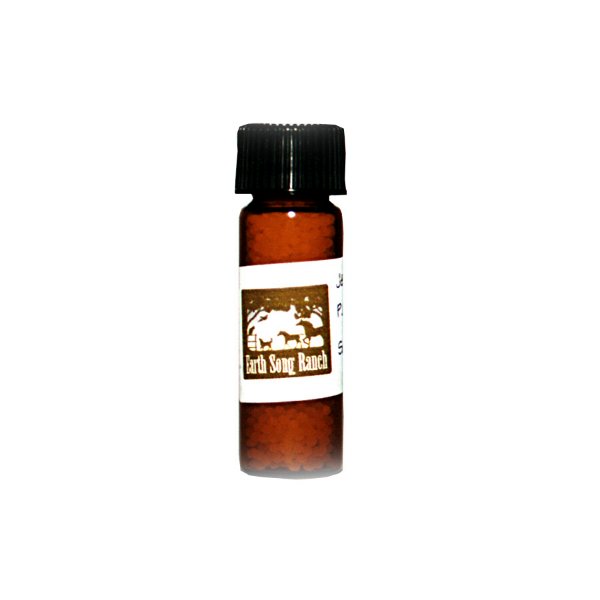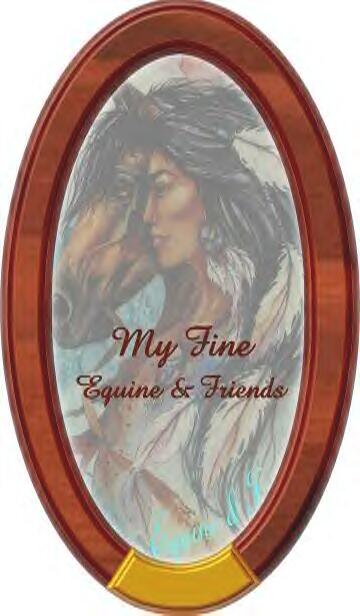
Horse, Dog, Cat, Nosodes
Equine Solutions Catalog Page 22a

NOSODES - by
(The Holistic Vet Clinic)
![]()
Herbal Wormer & Eye Health Support Herbs (Uveitis/Glaucoma)
Equine Equine-Zyme, Dog and Cat Equine-Zyme, Beta Glucan, Joint-Zyme, MSM, Glucosamine,
Mare, Foal, Stallion, Senior Zyme, Yeasture
for non-equine livestock,
Cushings, EPM, Hoof Builder, Tummy-Zymes
Pure Herbs and Herb Blends
Nosodes
![]()
Nosodes are Homeopathic Immunizations that are given in tiny sugar pill form,
monthly, that have no side effects, and are very effective in disease prevention.
all are 30C strength
See article below.

HORSES
1 dram bottles will last up to 5 horses 1 yr. 2 dram will last up to 10 horses 1. yr.
You can administer the little sugar pills between their lip and gums or you
can make a spray to spray on the gums. To build up the immune system,
Start out 1 time for 3 days in a row,
then 1 time per week for a month and then 1 time a month from there on to
maintain constant built up immune system.
If your horse, dog or cat already has an illness, we have homeopathic
protocols for them. Just email me to inquire: orders@myfineequine.com
EPM wt 4 oz 1 dram $25 - 2 dram $45
EPM Treatment Protocol $120 48 day very effective and no side effects. Use the EPM nosode to prevent reinfection.

Equine Protozoal Myeloencephalitis
From Wikipedia, the free encyclopedia
Jump to: navigation, search
Equine protozoal myeloencephalitis in various stagesEquine Protozoal Myeloencephalitis, or EPM, is a disease cause
by a protozoal infection of the central nervous system of horses.
Contents
1 History
2 Causes
3 Symptoms
4 Treatment and Prevention
5 References
History
EPM was discovered in the 1960s by Dr. Jim Rooney. The disease is considered rare, though recently, an increasing
number of cases have been reported. Research at the University of Kentucky has labeled the opossum as the definitive
host of the disease.
Causes
Life cycle of S. neuronaEPM is caused by the parasite Sarcocystis neurona. In order to complete its life cycle
this parasite needs two hosts, a definitive and an intermediate. In the laboratory, raccoons, cats, armadillos,
skunks, and sea otters have been shown to be intermediate hosts. The oppossum is the definitive host of the disease.
Horses most commonly contract EPM from grazing or watering in areas where an opossum has recently defecated. However,
horses cannot pass the disease among themselves. That is, one horse cannot contract the disease from another infected
horse. The horse is the dead-end, or aberrant, host of the disease.[1]
Symptoms
The neurologic signs that EPM causes are most commonly asymmetric incoordination (ataxia), weakness and spasticity,
although they may mimic almost any neurologic disorder. Clinical signs among horses with EPM include a wide array
of symptoms that may result from primary or secondary problems. Some of the signs cannot be distinguished from
other problems, such as lameness, which can be attributed to many different causes. Airway abnormalities, such
as laryngeal hemiplegia (paralyzed flaps), dorsal displacement of the soft palate (snoring), or airway noise of
undetermined origin may result from protozoa infecting the nerves which innervate the throat. Apparent lameness,
particularly atypical lameness or slight gait asymmetry of the rear limbs are commonly caused by EPM. Focal muscle
atrophy, or even generalized muscle atrophy or loss of condition may result. Secondary signs also occur with neurologic
disease. Upward fixation of the patella (locking up of the stifle joint) is among the most common findings among
horses with neurologic disease. Another common side effect of EPM is back soreness, which can be severe. The actual
method by which the Sarcocystis neurona infects a horse is still unknown, however it is thought to preferentially
infect leukocytes (white blood cells) in order to cross the blood brain barrier.
Treatment and Prevention
This disease is curable if caught soon enough and with the proper antibiotics from a veterinarian.
Control of this disease includes a recently released vaccine against the parasite, and control of opposums in an
area. The vaccine, however, has only been conditionally approved by the USDA until efficacy tests are available.
References
^ Equine Protozoal Myeloencephalitis: Introduction. The Merck Veterinary Manual (2006). Retrieved on 2007-07-03.
Retrieved from "http://en.wikipedia.org/wiki/Equine_Protozoal_Myeloencephalitis"
Categories: Horse diseases | Veterinary protozoology
Use the Navigation Bars for quick and easy access.

You can contact us by Snail Mail at: